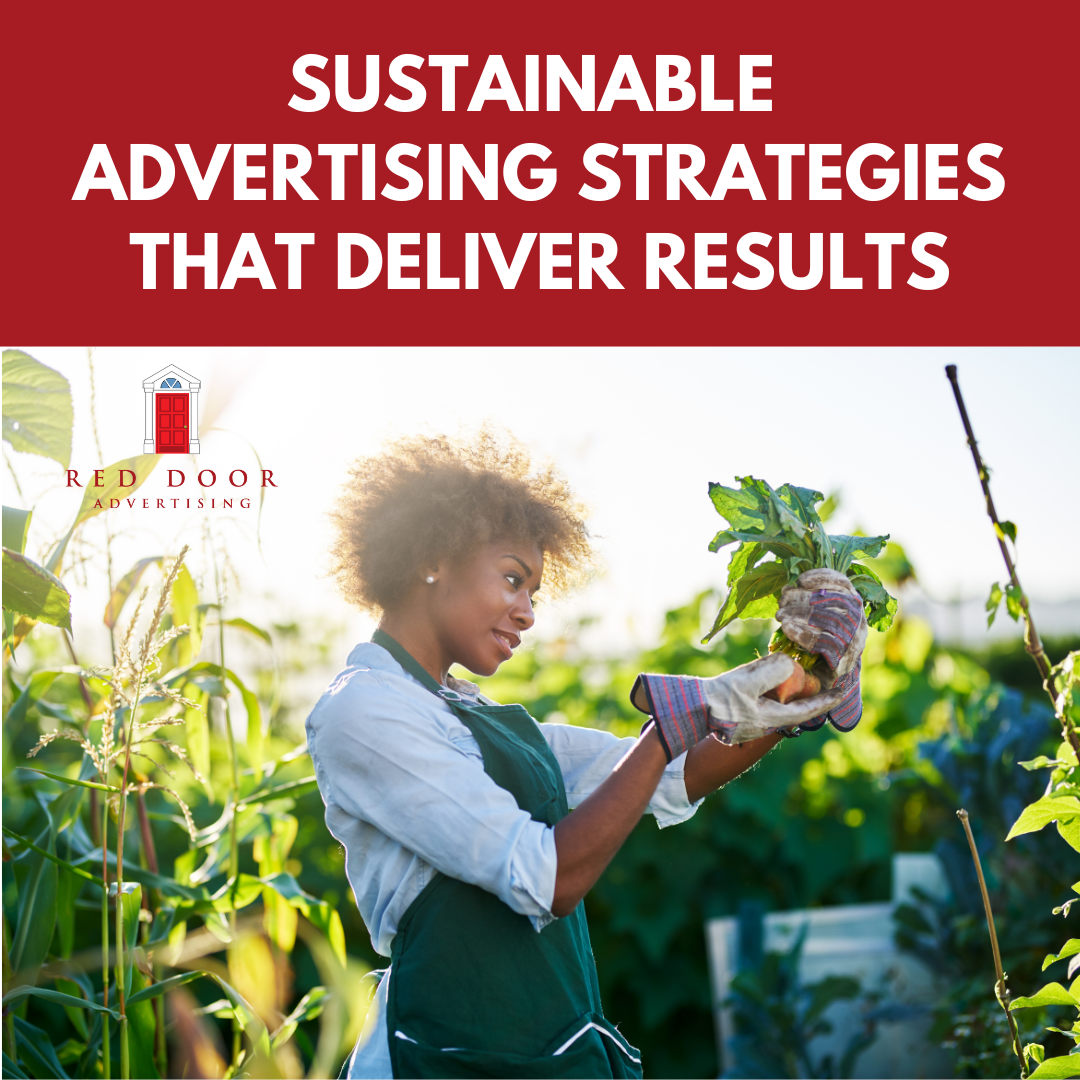
24 Jul Sustainable Advertising Strategies That Deliver Results
How Brands Can Market Responsibly and Drive Long-Term Success
In today’s increasingly eco-conscious world, sustainable advertising is no longer a niche consideration, it’s a strategic imperative. Brands are under pressure to not only deliver value through their products and services but also to demonstrate a commitment to environmental and social responsibility. Consumers, especially Millennials and Gen Z, are seeking transparency and accountability, and they favor brands that align with their values.
Sustainable advertising isn’t just about going green; it’s about building campaigns and business practices that are ethical, responsible, and designed for long-term impact. Here’s how brands can embrace sustainable advertising strategies that drive results while doing good.
1. Embrace Purpose-Driven Storytelling
Sustainable advertising starts with purpose. Brands that clearly define their mission and integrate it into their messaging resonate more deeply with audiences. Purpose-driven storytelling highlights a company’s commitment to sustainability in a way that feels authentic, not performative.
For instance, Patagonia doesn’t just sell outdoor gear, it actively campaigns for environmental conservation and ethical production. Their ads are less about products and more about planet-positive values. When storytelling connects emotionally and aligns with a brand’s identity, it builds trust and long-term loyalty.
Tip: Showcase the positive environmental or social impact your brand is making through real stories, customer testimonials, and behind-the-scenes content.
2. Use Eco-Friendly Media and Materials
Sustainability in advertising also means reducing the carbon footprint of marketing materials and platforms. This includes:
- Digital over print: Shift ad spend to digital channels, which generally have a smaller environmental footprint than traditional print campaigns.
- Sustainable print: When print is necessary, use recycled paper, vegetable-based inks, and local suppliers to minimize transportation emissions.
- Eco-conscious packaging: If your ads promote a physical product, align the messaging with sustainable packaging options.
Digital ads should also be optimized for efficiency. Streamlined files, optimized formats, and reduced bandwidth usage not only lower environmental impact but also improve user experience and SEO.
3. Choose Ethical Ad Partners and Platforms
Where and how you advertise matters. Partnering with platforms and publishers that support responsible business practices is a key part of sustainable advertising.
Look for:
- Platforms that commit to net-zero goals.
- Media outlets that support environmental journalism.
- Influencers and content creators who prioritize sustainability in their own lives.
Brands should also be wary of “greenwashing”, where companies overstate or misrepresent their sustainability efforts. Consumers are savvy and quick to call out inauthentic messaging. Align your brand only with partners who share your commitment to honesty and transparency.
4. Encourage Consumer Participation
Consumers want to feel involved in sustainability efforts. Brands can build stronger connections by creating campaigns that invite participation. For example:
- Launch recycling programs that customers can join.
- Use QR codes on packaging that link to sustainability progress reports.
- Promote challenges like “plastic-free week” or “bike-to-work month” and share user-generated content.
Participation fosters a sense of community and ownership, transforming customers into brand advocates who amplify your message organically.
5. Invest in Long-Term Relationships, Not Just Clicks
Sustainable advertising means shifting from short-term performance metrics (like clicks and impressions) to long-term value metrics (like customer lifetime value and brand equity). While performance marketing has its place, sustainable strategies prioritize depth over breadth.
Focus on:
- Building an engaged email list.
- Cultivating loyal social media communities.
- Offering meaningful content, like guides, webinars, or tools that support your audience’s sustainable lifestyle.
By nurturing relationships, brands can build a foundation for lasting success, without resorting to wasteful or aggressive tactics.
6. Measure and Communicate Impact Transparently
Sustainable advertising isn’t a one-time effort; it’s an ongoing commitment. To maintain trust, brands must track their sustainability performance and communicate progress with transparency.
Use metrics such as:
- Carbon footprint of marketing activities.
- Percentage of recycled materials used in campaigns.
- Engagement rates with sustainability-themed content.
- Consumer feedback on eco-initiatives.
Publish sustainability reports, create a dedicated section on your website, or share milestones via newsletters and social channels. Honesty about successes and areas for improvement reinforces your brand’s integrity.
Profit with Purpose
Sustainable advertising is about more than good intentions, it’s about taking concrete actions that benefit people, planet, and profit. When done right, it drives deeper customer engagement, fosters brand loyalty, and positions your company as a forward-thinking leader in a crowded marketplace.
As global consciousness around climate change and ethical business rises, brands that lead with purpose and authenticity will not only survive but thrive. Sustainable advertising isn’t a trend; it’s the new standard. And those who embrace it now are shaping the future of responsible commerce.
Key Takeaway
Brands that adopt sustainable advertising strategies—from ethical storytelling to eco-friendly media use and transparent reporting—build lasting trust, inspire action, and drive real business results while doing good for the world.
For more information on how to help your business stand out by designing effective sustainable advertising strategies, contact us at randi@reddooradvertising.com or brendan@reddooradvertising.com or visit https://reddooradvertising.com/.


